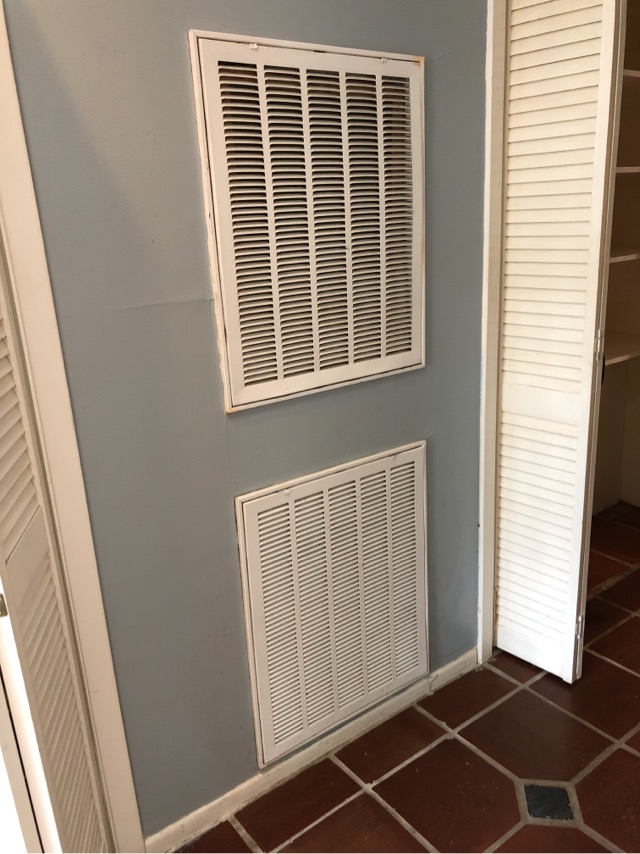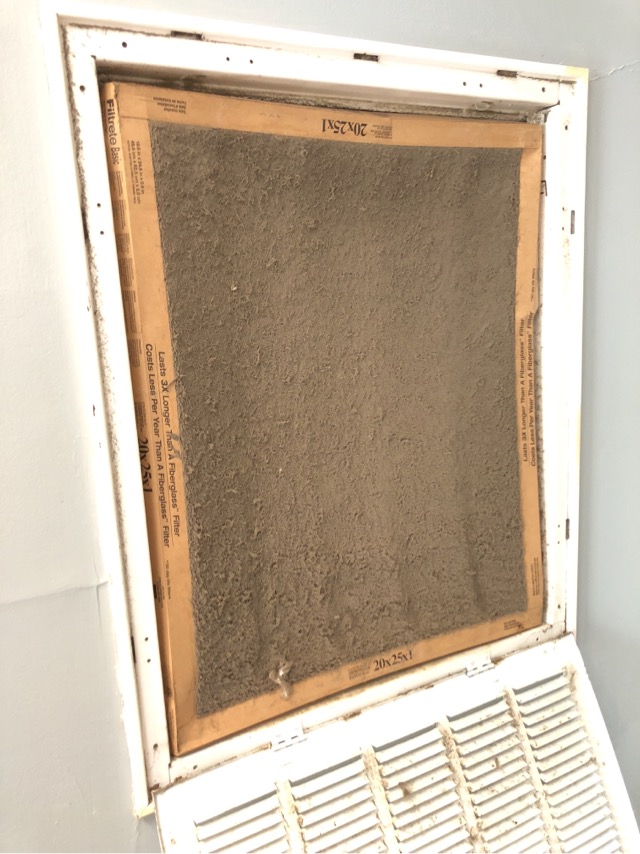Do you know where your return air filter is? Have you replaced it recently?
Return air filters are part of your home’s heating and cooling system. They trap dust, dirt, hair, pet fur, and microscopic particles. Without a return air filter, those contaminants would get into your heating and cooling equipment and be recirculated throughout your home. Return air filters enhance your indoor air quality and extend the useful life of your equipment. When filters are dirty, they don’t screen out airborne particles and they force your equipment to work harder; this causes a loss in performance, more money spent on energy costs, and more contaminants in the air you breathe.
Your home may have one, two, or more return air filters. Often, there is a single filter located adjacent to the furnace in the attic. It is also common for filters to be located at return air registers, which may be located in walls or ceilings of your home.


Replacement of return air filters is usually fairly easy. Determine the exact size required (generally by looking at the existing filter). Make sure you check the “actual size” – for example, filters that are listed as 4″ thick can be anywhere from 3-1/2″ to 4-1/2″ thick. Before removing the old filter, look for an arrow printed on it indicating airflow direction. Install the new filter with the airflow arrow pointing in the same direction.

Return air filters are available in many different types and price points. They may have a “MERV” or “MPR” designation; filters sold at Home Depot have an “FPR” designation. These all mean slightly different things, but in general, a higher number means the filter screens out more particles. I recommend buying filters with the highest MERV, MPR, or FPR that you can afford.
Return air filters should be replaced regularly. In my home, I have a main heating/cooling system with two 20x25x4 filters; I replace those every two months. I have a secondary small system with one 16x20x1 filter; I replace that every month. Your needs may vary, depending on number of people living in your home, pets, and other factors. I use the Reminder app on my iPad to let me know when it is time to change filters.
In terms of cost/effort versus benefit, replacement of return air filters is one of the best home maintenance tasks you can perform. It’s usually easy and fairly inexpensive, but will provide significant benefits in air quality, energy cost expenditure, and equipment life. If you have any questions about return air filters, feel free to contact Milepost Home Inspection, another licensed home inspector, or a licensed Heating Ventilation Air Conditioning specialist.
